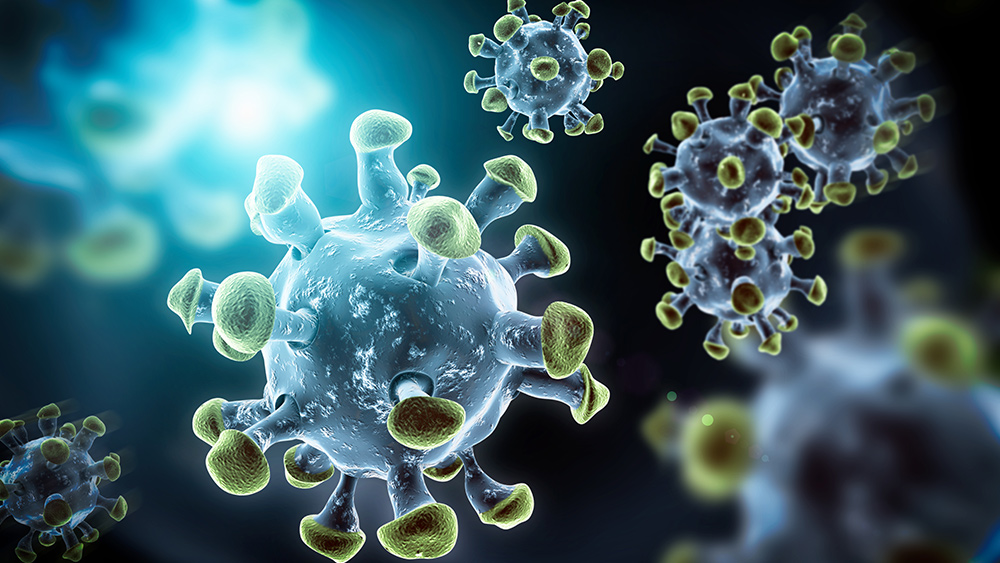China discovers new coronavirus strain that “lasts for 49 days”
05/03/2020 / By Ethan Huff

There is yet another strain of the Wuhan coronavirus (COVID-19) that’s been identified, this time in a middle-aged Chinese man who suffered from it for a whopping 49 days.
While “normal” coronavirus lasts for a much shorter period of time, this one stuck around for a whole lot longer, resulting in the man having to be treated with a plasma transfusion.
While most infected patients end up surviving a Wuhan coronavirus (COVID-19) infection and testing negative about 20 days after testing positive, this guy had it for more than twice that long. The previously known longest case of the Wuhan coronavirus (COVID-19) lasted for 37 days.
Even so, this particular patient is said to have had only mild symptoms, and the lesions that appeared in his lungs early on disappeared not long after he was taken to the hospital.
The vast majority of Wuhan coronavirus (COVID-19) cases fall into the acute category, but this one was dubbed chronic, suggesting that the virus probably mutated to become longer in duration.
Researchers from the Army Medical University in Chongqing, No. 967 Hospital of PLA, Dalian, and General Hospital of the PLA Central Theatre Command in Wuhan have all reportedly indicated that this particular strain of the Wuhan coronavirus (COVID-19) may have formed a “symbiotic relationship” with its host, meaning they both somehow benefited from each other’s presence.
Listen below to The Health Ranger Report as Mike Adams, the Health Ranger, talks about the hypocrisy of bureaucrats demanding access to our antibody counts when we don’t have access to the level of drugs in their bloodstreams:
How many coronavirus outbreaks will there be?
This infected individual is said to have passed on the Wuhan coronavirus (COVID-19) to one of his elderly female relatives, who developed mild symptoms. But she recovered much more quickly than the average for her age, despite having pre-existing health conditions.
What this all suggests is that there’s potentially a new mild sub-type of the Wuhan coronavirus (COVID-19) in circulation that, while not necessary as transmissible as other strains, could be much harder to eliminate.
Other “chronic” patients who catch it probably wouldn’t have to be treated because the symptoms are generally mild. However, they could continue to spread the infection to others because of this, resulting in new outbreaks.
Whether this particular strain of the Wuhan coronavirus (COVID-19) has reached the United States remains unknown, though it’s possible seeing as how many people who are testing positive have mild or no symptoms.
In the case of this anomalous strain, reports claim that the only way to recover from it is to be injected with the blood of a survivor.
These same reports claim that the patient tested positive for the Wuhan coronavirus (COVID-19) on days 17, 22, 26, 30, 34, 39, 43, and 49, though he supposedly tested negative on day 47, which “may have been a fluke,” according to Tech Times.
If the bulk of these tests was accurate, then the patient was probably shedding the virus during the entire duration of 49 days. And according to Chinese researchers, the longer the virus sheds, the more severe it becomes, meaning an onslaught of new infected patients is likely soon on the way – not to mention multiple strains of an already unusual and largely unknown virus.
“And of course, we believe everything China tells us because of their impeccable record of transparency, openness, and dissemination of rock-solid accurate information,” joked one commenter at The Mirror sarcastically.
“If people on average have the virus for 20 days then why are people with symptoms being told to self-isolate for only 7 days?” asked another.
To keep up with the latest news about the Wuhan coronavirus (COVID-19), be sure to check out Pandemic.news.
Sources for this article include:
Tagged Under: 49 days, China, Chinese Virus, coronavirus, covid-19, disease, global emergency, Global Pandemic, infection, infections, mutations, new strain, novel coronavirus, outbreak, pandemic, Virology, virus, Wuhan, Wuhan coronavirus



















